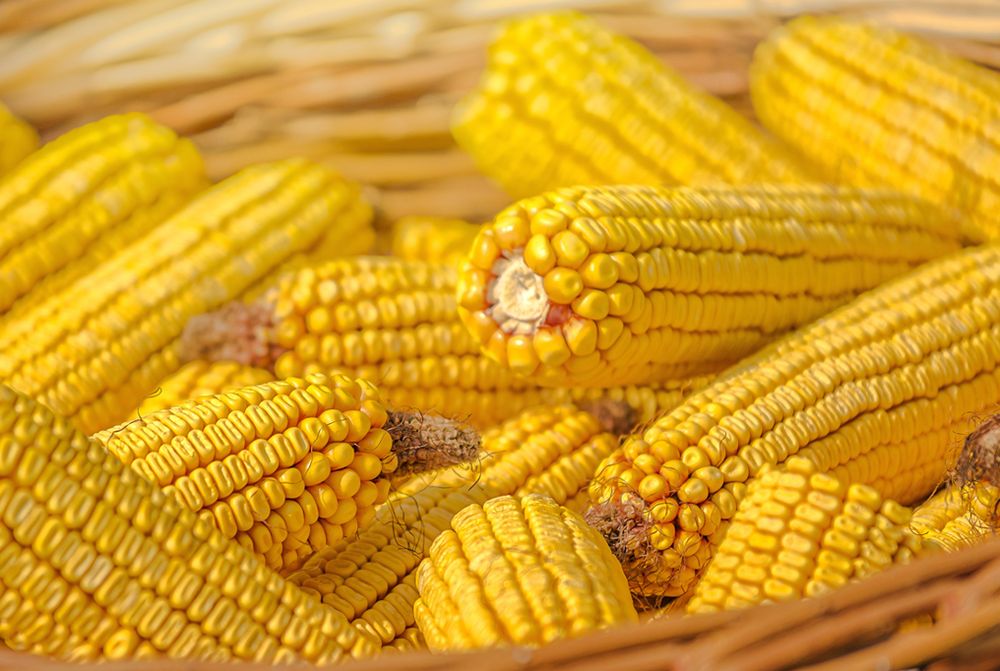Why Is Mexico so Dependent on the U.S. Corn Supply?

Mexico’s Corn production stagnated in the past four years, averaging 27.35 Mmt per year. In comparison, the U.S. is the largest Corn producer in the world. However, Corn land decreased by 1.4 Mha YoY in MY 2022/2023, leading to production falling 15.5 Mmt YoY to 368.4 Mmt. Yet, the U.S. production remains 3x larger than Brazil’s, the second largest global Corn producer. Since 2018, Corn production in Brazil & Argentina has risen. While Argentina’s increased by 4 Mmt over the past four years, Brazil’s production also increased by 15 Mmt (+15%) between 2018 and 2022, making Argentina, Brazil, and the U.S. Corn export leaders worldwide.
Figure 1: Corn Production Between 2018 & 2023 in the U.S., Brazil, Argentina and Mexico

Mexico’s domestic Corn consumption averages 43.85 Mmt yearly and production reaches 27.24 Mmt on average. Thus, Mexico imports ~ 16.20 Mmt of Corn each year, making it the second-largest importer of Corn in the world after China. The majority of these imports come from the U.S. Export volumes from the U.S. to Mexico increased by 2.2 Mmt between 2020 and 2021. However, they decreased by nearly 4.5 million tons between 2021 and 2022. Since 2022, Mexico increased Corn imports from other origins than the U.S., with 745 kmt of Brazil Corn between Jan and Sep 2022. Mexico also imported Corn from Argentina with 174 kmt of Corn for the same period, increasing by 75kmt import volume for 2021.
Figure 2: U.S., Argentina and Brazil Corn Exports to Mexico Between Jan 2020 & Sep 2022

Mexico ranks second among the top destinations for U.S. Corn between Jan & Sep 2022. China increased U.S. Corn imports by 11 Mmt in 2021 YoY, overtaking Mexico as the leading U.S. Corn destination. Meanwhile, Japan — the third largest destination for U.S. Corn in the past two years — increased imports only by 0.88 Mmt in 2021 YoY. However, Mexico is only the 9th largest destination for Brazil’s Corn & 23rd for Argentina’s Corn, respectively. Brazil’s Corn exports particularly increased towards Iran in jan to Sep 2022 by 0.92 Mmt compared to all 2021 imports. Mexico, despite being a large Corn importer, is not necessarily an important pipeline for LatAm.
Figure 3: U.S., Brazil and Argentina Top 3 Destinations Between Jan and Sep 2022

In 2021, Argentina’s Corn exports to Mexico reached a total volume of 99 kmt during June, July and August, tallying with Argentinian Corn FOB prices averaging USD 253/mt during the same period, which was USD 37/mt and USD 22/mt cheaper than those offered by the U.S. and Brazil, respectively at the time. From Jan to Feb 2022, U.S., Argentina, and Brazil FOB Corn spot prices were very close. However, following the beginning of the war in Ukraine, Corn prices peaked at USD 364/mt on 11 March 2022 for Argentina, at USD 382/mt on 10 March for Brazil, & USD379.5/mt on 15 March for the U.S. However, while Argentina and Brazil prices started decreasing rapidly to ~USD253/mt in July 2022, the spread with the U.S. Corn FOB spot prices remained large, and above USD 30/mt in July. Yet, Mexico carried on with Corn imports mainly from the U.S., driven by the USMCA.
Figure 4: Daily FOB Cash Prices for Corn Exports From Argentina, Brazil & Mexico Between Jan 2020 and Sep 2022

Mexico produces only 77% of the Corn consumed domestically. The remainder usually comes from the U.S. and from Brazil but has been also sourced from Argentina recently. Brazilian exports depend on the effect of La Niña on production, as in MY 2020/2021, exports decreased, and imports increased due to this phenomenon, which persisted into the 2021/2022 season and is already expected to repeat in 2022/2023.
Since the beginning of the war in Ukraine, Argentina and Brazil are offering lower Corn FOB prices compared to the U.S. However, due to La Niña, droughts have rendered Brazil’s supply unstable. Besides, Mexico is not a traditionally important destination for Argentina’s Corn. Thus, the U.S. is the only viable supply for Mexico’s Corn imports. Nonetheless, Mexican President Andres Manuel Lopez Obrador has introduced a strategy to ban genetically modified (GMO) Corn in Mexico, whether produced or imported. However, the regulation currently applies only to production, and the ban application for imports is not yet clear!
As Mexico is the second largest destination for U.S. Corn after China, U.S. farmers are urging Mexico to revoke the GMO Corn ban. In addition, the U.S. offers Mexico a steady supply easy to transport by trains or out of U.S. Gulf ports. Therefore, the GMO import ban effect is menacing, especially since the Brazilian supply is not regular because it is affected by weather conditions. In addition, banning only GMO Corn domestic production threatens local Mexican farmers’ competitiveness.
Read also
Pakistan Unlikely to Import Wheat in the MY 2025/26
Low soybean supply supports prices in Ukraine, but increased crop forecast in Braz...
Zelenskyy outlines 20 points of draft peace framework, including free navigation i...
EU wheat exports slightly lag last season in 2025/26
Merry Christmas and Happy New Year!
Write to us
Our manager will contact you soon



